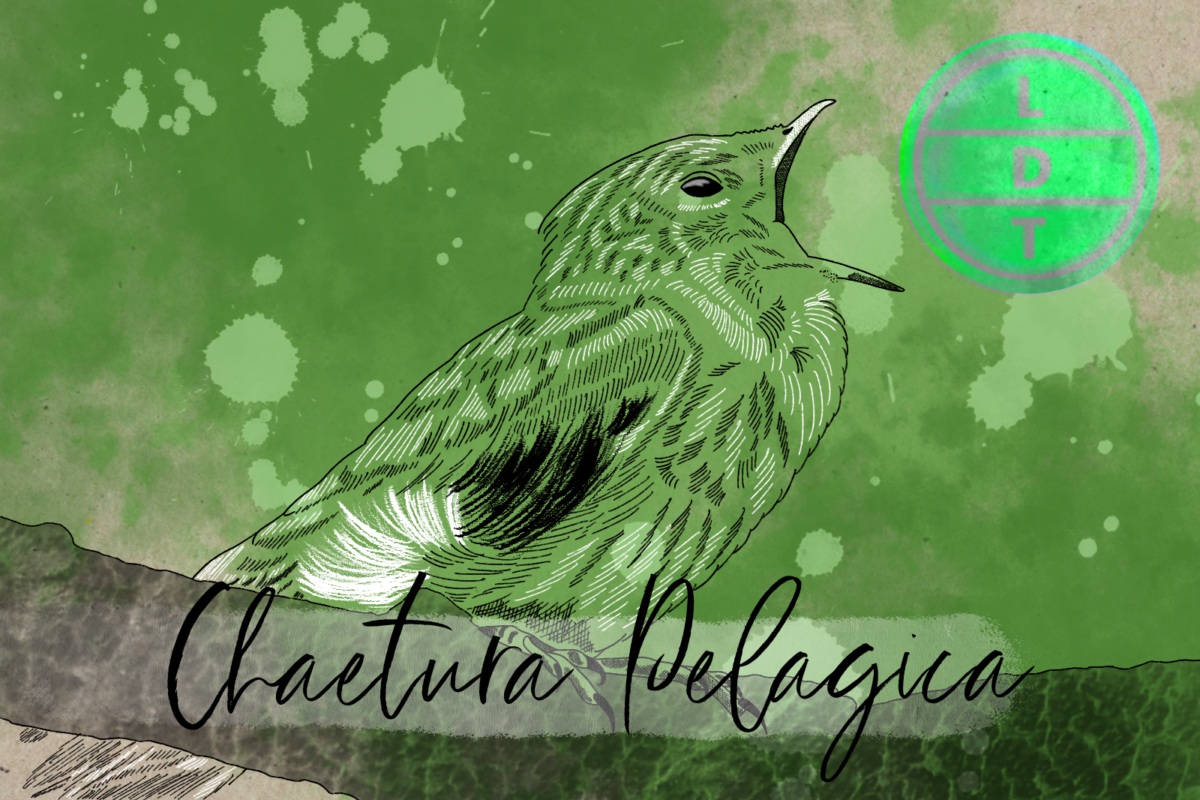“…And today we’re talking about a bird that wears t-shirts and stays on the bleachers. But more on that later.”
Bird life is about taking to the skies, but it’s also about finding a place to rest, nest, and make more birds. But where do you nest when a tree branch is just too uncomfortable for you to sit on? Such is the challenge for a certain kind of swift, that lives life in the air until they find a nice safe place to glue their nests to the side of a flat surface. But sometimes you have to compete with humans for the best places to make your home in Life, Death, and Taxonomy.
Description
- Little finch-ish looking bird with a bullet-shaped body.
- It has a small, sharp beak and long, stealth bomber wings that are angled backward
- Looks like a boomerang in flight
- It has countershading with brown-grey feathers on its back with lighter grey feathers on its belly and throat
Measure Up
Welcome to the beloved Measure Up segment. The official listener’s favorite part of the show! The part of the show when we present the animal’s size and dimension in relatable terms through a quiz that’s fun for the whole family. It’s also the part of the show that’s introduced by you when you send in audio of yourself saying, singing, or chittering the words Measure Up into ldtaxonomy at gmail dot com. We don’t have a new Measure Up intro this week but we are going back in the archives to revisit greatest hits.
Length
- 12 to 15 cm (4.7 to 5.9 in)
- How many chimney swifts go into the tallest chimney in the world?
- Hint: The tallest chimney is at GRES-2 Power Station in Kazakhstan. It’s a coal burning plant that was built by the Soviet Union in 1982, and half of it is owned by Inter RAO UES, the Russian energy company.
- 2,800 chimney swifts. The chimney is 1,377 feet (419.7 m).
Weight
- 17 to 30 g (0.60 to 1.06 oz)
- How many chimney swifts go into the weight of people that attended the highest grossing world tour by a musician in 2015?
- Hint: The tour was Taylor Swift’s 1989 World Tour and it grossed $250 million. The average weight of an American is 185.3 lbs including the weight of both men and women.
- 22,786,470 swifts. 2,278,647 fans attended the tour for a combined total of 422,233,290 lbs.
Fast Facts
- Range: Eastern North America and Northwestern South America. They actually breed in North America and migrate to South America for the winter.
- Diet: Pretty much just insects like flies, ants, wasps, and bees
- Behavior:
- Life span: 4.6 years
Major Fact: They Flew into a Flue
The Tik Tok account HomeandMomLife posted a video in which a woman is recording a house from outside and she sees thousands of something flying around a chimney.
[Play Audio]
In follow-ups, she said she spoke to the home owners and found out they weren’t bats, they were chimney swifts. The homeowners were unphased, and they said it happens every year.
It’s not always sunshine and rainbows for homeowners though. Those that forget to keep their dampers closed experience a minor catastrophe.
Here’s another clip from Inside Edition.
Chimney swifts like to nest in enclosed spaces. But they are so named because they love to nest in chimneys. Before people started building chimens in North America, the birds would nest in hollow trees. But now they almost always nest in man-made structures.
If there aren’t any enclosed options, then they are in trouble, because they literally can’t nest in trees, in the typical fashion.
They don’t have a backward facing toe, so they can’t perch on branches.
When the flues are closed, they may nest in abandoned buildings, wells, and cisterns. They may also nest in buildings that are in use, if they are left alone.
Once they find a nice dark space of some kind, the swifts will build their nests. Nests are made almost entirely of sticks that are freshly plucked off of trees mid-flight.
These tiny log-cabins are held together by the bird’s saliva. When it’s breeding time, their salivary glands will expand to twice their original size.
Eggs take about three weeks to hatch, and it will take another month before hatchlings are ready to leave the nest. If you hear a thousand birds in your chimney, it may take awhile before they leave.
Ending: So spend the winter in South America, cling to the walls of your favorite flue, and come back to us like a boomerang like the chimney swift here in LDT.

